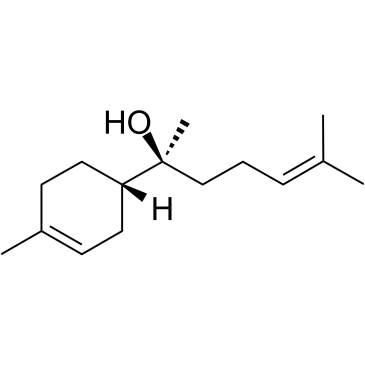STAT-3 inhibitory bisabolanes from Carthamus glaucus.
Orazio Taglialatela-Scafati, Federica Pollastro, Lavinia Cicione, Giuseppina Chianese, Maria Luz Bellido, Eduardo Munoz, Hasan Çetin Özen, Zuhal Toker, Giovanni Appendino
文献索引:J. Nat. Prod. 75(3) , 453-8, (2012)
全文:HTML全文
摘要
Apart from a large amount (ca. 2.0%) of α-bisabolol β-D-fucopyranoside (2a), the aerial parts of the Mediterranean weed Carthamus glaucus afforded an unusual triglyceride (E-2-crotonyl-1,3-distearolylglycerol, 7), two lipophilic flavonoids (6a,b), and a series of bisabolane fucopyranosides variously acylated on the sugar moiety (2b-e) or oxidized on the terpenoid core (3, 4a,b, 5a,b). The fucopyranoside 2a is more soluble in polar media and more versatile in terms of formulation than its aglycone [(-)-α-bisabolol, 1], an anti-inflammatory cosmetic ingredient in current short supply in its natural form. A comparative investigation of the activity of α-bisabolol (1a), the fucopyranoside 2a, and its senecioate 2b on transcription factors involved in inflammation and cancer pathways (NF-κB and STAT-3) showed only marginal activity on NF-κB inhibition for all compounds, while STAT-3 was inhibited potently by the fucoside 2a and, to a lesser extent, also by α-bisabolol. These observations qualify 2a as an easily available compound, both as an apoptotic lead structure and as a potential alternative to natural α-bisabolol (1) for pharmaceutical and/or cosmetic development.
相关化合物
| 结构式 | 名称/CAS号 | 分子式 | 全部文献 |
|---|---|---|---|
 |
左美诺醇
CAS:23089-26-1 |
C15H26O |
|
The antimicrobial activity of alpha-bisabolol and tea tree o...
2013-01-01 [Arch. Oral Biol. 58(1) , 10-6, (2013)] |
|
Antitumor effects of α-bisabolol against pancreatic cancer.
2011-12-01 [Cancer Sci. 102(12) , 2199-205, (2011)] |
|
In vitro and in vivo antimalarial activity of essential oils...
2012-05-01 [Planta Med. 78(7) , 658-64, (2012)] |
|
Evaluation of the mutagenicity of sesquiterpenic compounds a...
2011-07-14 [Mutat. Res. 723(1) , 18-25, (2011)] |
|
Enantioselective microbial synthesis of the indigenous natur...
2014-10-15 [Biochem. J. 463(2) , 239-48, (2014)] |